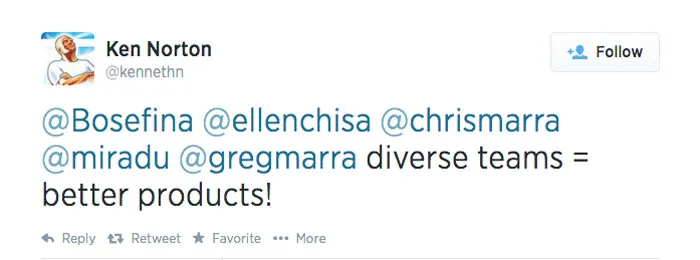I know a handful of non-traditional PMs out there. Psych to PM:@Rohinivibha. Literature to PM:@xsvengoechea. Neureconomics to PM: me. Contrary to Silicon Valley stereotypes, we exist. Becoming a PM (product manager, for the uninitiated) without the CS degree and coding skills is possible, albeit difficult.
Below is some wisdom distilled from my messy and chaotic journey with a caveat: this is not a how-to guide. Becoming a product manager is building the most important product — YOU. Below are five products, err human development phases to get there.
Cross-functional. CEO of a Product. Visionary. These are all buzzwords thrown around to define product management. Sure, you can read articles about product management (see below for resources), but you need to come up with your own definition. There is no one definition that encompasses all. Defining product management does two things:

1) Identifies the traits you want to embody as a PM
2) Clarifies what you want to accomplish
Here is my definition of a PM:
n. a person who functions as a scientist, armchair psychologist, and janitor in cross-functional teams. Ever curious, open to new ideas, perceptive, listens, and evolves through time. Someone who works well with engineers and designers and understands the customer’s needs. Someone who will do anything necessary to ship a product on time and maintain that product’s quality through its lifecycle.
What is your definition of a PM? There is no right answer. Every PM is slightly different. Feel free to let your definition evolve as well.
Identify why you want to go into product management. Motivations dictate action. Why are you drawn to product management? Do you want to go into PM because it is cool, sexy, or lucrative? Maybe you like the cross-functional aspect of the role. Whatever it is that draws you to product, make sure you are going into the space with the right intentions. Glitzy roles and illusions of grandeur fade fast. Check your initial assumptions and see if they are still valid. Trust me, your future self will thank you for the due diligence.
Know your product and sector. What kind of product do you want to build and in what space? There is a reason why ‘what is your favorite product and why?’ is the most frequently asked question in product interviews. It taps into the heart of what makes you tick. A PM is someone who needs to be passionate about a space, emotionally connected to what they are building, and a power user. You have to eat your own dog food so make sure you like the taste.
There are so many breeds of PMs so do your research. If I were to draw you a matrix, there would be too many boxes. Instead, I found Asana Product Manager Jackie Bavaro’s Venn Diagram of PM skills helpful:

A good PM embodies skills in both circles. You may be heavier on some skills over others. Some PMs are design-heavy others are user-focused. Find your niche.
Talk to people. While working as a support rep at Sunrun, I took out one PM a week for lunch or coffee. I asked them what product management meant to them and what they consider to be a good PM. Each interviewee had a different answer. Out of the myriad of stories, opinions, and advice, I started to separate signals from the noise. PMs are problem solvers. PMs are conduits. PMs are technical-minded people who translate problems to solutions etc. Hearing other PMs’ stories helped me realize that the journey is non-linear and the job unglamorous.
Know yourself. See how your strengths and weaknesses align with the many traits of a PM. A SWOT analysis identifies the internal and external factors that are favorable or unfavorable to a business objective. It can be applied to a project, business venture, or person. To identify your strengths, take the StrengthsFinder Test and the Meyer’s Briggs personality profile. My five strengths from the StrengthsFinder test — Futuristic, Ideation, Individualization, Woo, and Communication — informed me that I am a big picture person. Knowing my strengths allowed me to recognize my weaknesses like attention to detail. I started writing more detailed specs, coding, and debugged with our QA team to hone my observation skills. While people are often encouraged to develop their strengths at the expense of developing their weaknesses, I believe in a more balanced approach. Early on in your career, you are malleable enough to focus on developing your weaknesses too.
Read a lot of job descriptions and LinkedIn profiles to hone in on the industry profile. Find patterns in how PMs describe themselves. Pick up on action verbs like ‘tackle data quality problems’ or ‘analyze user complaints’, anything cluing in on skills and tasks critical to the job. Once you identify the action verbs and adjectives (‘cross-functional’, ‘critical thinking’, and ‘impactful’ etc.), think about how you can acquire these skills, traits, and experiences. Knowing what you’re missing will inform you on areas to develop.
Build your technical acumen and language fluency: Unfortunately, the sentiment in tech is “YOU HAVE TO CODE TO BE TAKEN SERIOUSLY.” The current reality and bias against non-coders means you will have to beef up your technical chops. You don’t have to be an expert, just be curious to learn. Focus on gaining the language fluency to work with a developer. Be familiar with different languages, understand why certain engineering decisions were made, and have a basic understanding of APIs, system architecture, servers etc. Know how your web browser works. Take online programming classes like Udacity’s Intro to Computer Science class and read tech blogs(see below). Take a RailsGirls workshop or work on a passion project. Building something will help you overcome the Valley’s bias against non-technical backgrounds, minorities, and women. Knowing how to turn a disadvantage around will be critical to your career path.
Seek out product experience: Now that you have a worldview, find projects in your current role that enable you to work with members of the product, design, and engineering team as much as possible. Small projects such as setting up Salesforce CRM, filing bugs, testing the newest release of the company website will help you become the technical point person in your department. Do anything that could expose you to interfacing with more technical minds. You want to build your brand as a go-to problem-solver opening the doors to product-related projects and cross-functional opportunities.
Tell your story: Steve Jobs said, “You can only connect the dots looking back,” so tell your story in retrospect. Many college graduates (including me) didn’t know product management existed when they entered the workforce. Explain why product management is the logical jump for you. Why is PM a natural calling? A lot of the qualities of a PM come from a diverse liberal arts degree: communication, writing, research, and analysis. Play by your strengths. Explain why your particular background and work experience give you a unique vantage point as a PM. Companies are starting to realize that diverse teams build better products, which is the reason why I joined Facebook. Diversity is the answer to Silicon Valley’s mono-culture problem.

Transition to product internally or apply externally: Once you feel you have enough of a skill set to qualify for a product gig, apply away! Apply internally for product openings if you see prospects in your current company. Internal transfers give you a huge advantage because you know the product and company well which is time saved in onboarding. You’ve also cultivated relationships with the existing product team, establishing credibility and rapport. If your company is not hiring internally then apply externally for junior product roles (associate product manager) or rotational programs that will give you the right training and mentorship to succeed as a PM. Many people think startups are great learning grounds for product management. I disagree, because you can only practice product management with a cohort of engineers, designers, and other team members. I will admit, I learned a lot from the start-ups I worked for (Sunrun, Opower, SigFig) but found the resource-constrained, fire-fighting environment inherently lacking in mentorship and training. It’s better to start at a mature company learning from experienced PMs. Consider rotational programs at Intuit, Yelp, LinkedIn, Facebook, and Evernote. These rotational programs are open for recent university graduates and young professionals looking to transition into product.
Know your target company and speak their language: If you do decide to apply externally for fresh product roles, research the company by first having informational interviews. By talking to a company insider, you will be able to go beyond online job postings and really understand what they are looking for. Each product team works slightly differently so be sure to understand the organization’s structure. Ultimately, what will help you land that first-time product gig is by speaking the company language. People hire people who speak the same language. Language is synonymous to “culture fit.” If a company makes an investment software tool (SigFig, Wealthfront), then they speak predominantly finance. If they are an energy efficiency SaaS company (Opower, EnerNOC) then they speak renewables. Others speak in design frameworks(Nest, Square) instead of domain specific jargon. Whatever the company, make sure you are fluent in their dominant language.
Realize that the product management route is non-linear full of close approximations, trial and error, and serendipity. Apply the best fit model to your product career development. They should want you as much as you want them. Find a company that looks beyond the piles of cookie cutter resumes and sees value in your non-traditional background.
By the way, it doesn’t have to be a ‘sexy’ startup or a big tech company. My first product role was at a solar finance startup, working on a very unsexy part of the product: contract changes. Working there made me realize I wanted to be closer to the software side so I moved into energy efficiency software as a service and then investment services software before landing at Facebook. Each step I took brought me closer to product management, from building processes to shaping the end product.
I owe my journey to the mentors, managers, co-workers, and friends who took a chance and saw potential in me. Wishing you the best on your product journey! Carve your own path and power forward.







